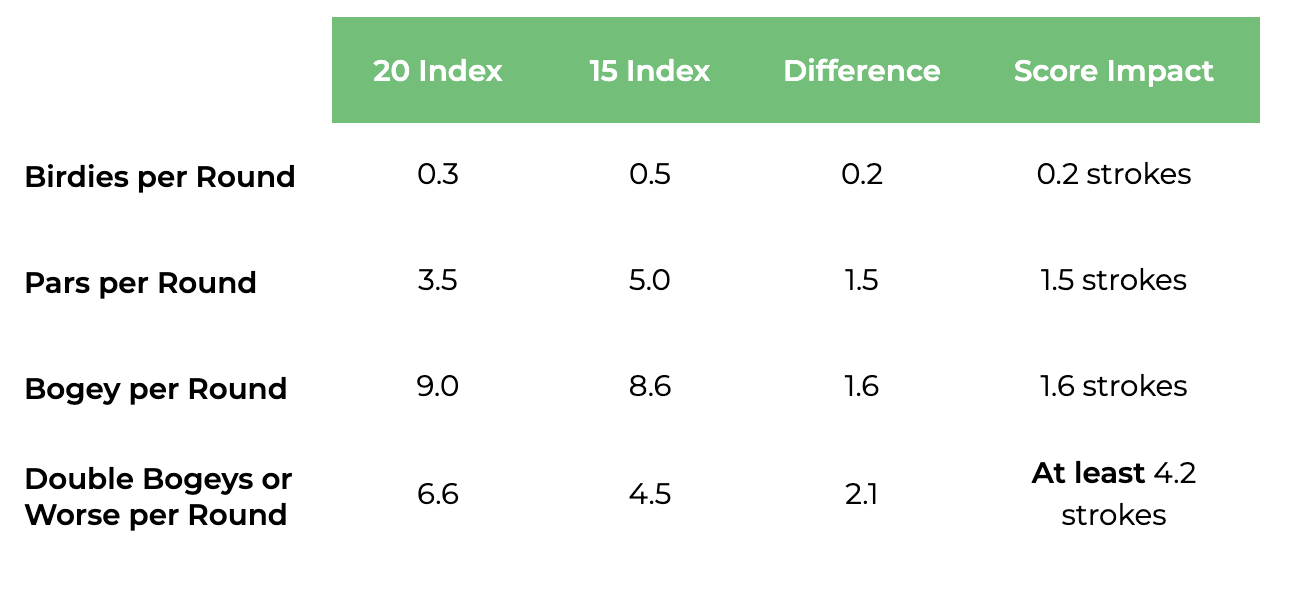
Golf is a game of fine margins, and that is certainly the case when trying to improve your handicap. Many of us will have been in a situation where we feel stuck on a certain number, and aren't getting any better, so we start to wonder what we can do differently to get closer to our target.
Thanks to the latest data from Arccos, we can now reveal the main differences between a 15- and 20-handicapper, which you can use to fast-track your progress...
The main differences between a 15 and 20-handicapper
First of all, let's swiftly move past the obvious. Before I receive the 'very original' comment about the skill difference between a 15- and 20-handicapper being 5 shots, this data is designed to go much deeper into the nuances of where you need to improve your game to get to that lower number.
For starters, the dispersion isn't equal across the key facets of the game (Driving, approach, short game and putting). In fact, one of the crucial differences lies within the long game, with driving and approach play accounting for two thirds. That suggests that your quick wins could be powering up your golf swing or improving your ball-striking.
To go into a bit more detail on this, around 38 percent of the five-shot difference comes from approach play, and 26 percent from driving, while short game covers a much smaller portion (16%).
The difference in terms of putting between the two players is around 1 stroke per round on average, or 20 percent of the five shots, which is almost half of the premium placed on approach play.

There is also a clear contrast in scoring for each player, with the number of double bogeys or worse made being the biggest factor. A 20-handicapper (6.6) makes just over 2 more double-bogeys or worse than a 15-handicapper (4.5) on average per round, whereas there is just a 0.2 shot difference between the number of birdies made (0.3 vs 0.5). This clearly suggests that reducing the big scores is far more valuable than relying on a flurry of birdies.
The emphasis on approach play becomes clearer when you look at the number of greens in regulation made in the average round. A player with a 20-handicap finds just 3.6 greens per round, while someone with a 15-handicap performs slightly better with 4.9.
While it's great to say you have hit the green in regulation, proximity will also always be an indicator of scoring performance. The difference in proximity between the two ability levels is around 3 feet, with a 15-handicapper leaving themselves around 33 feet to the hole in comparison to the 36 feet left by a 20-handicapper.

So, what do I need to do to improve?
There are many ways to shave five shots off your handicap. The data above is for the 'typical' golfer, so while one 20-handicapper could putt much better than another, they may have a much weaker short game.
The two key takeaways are to focus on improving your driving and approach play, whenever you head to the range for 30 minutes, and eliminate double bogeys from your card. Tracking your stats while playing will also help you to gain a better understanding of your game, and indicate the specific areas that you need to work on.







